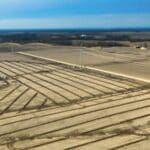Your land is the foundation on which you – and your family – have built your legacy. And what you hope will become your children’s and grandchildren’s legacy. For many, it has been in the family for decades, if not more than a century. It is no wonder why the Ag community is severely protective and skeptical about diversifying land use for conservation and additional revenue streams. But, does this general perception match reality?
The Truth about Diversification Efforts on Your Land
Our beliefs dictate how we operate. If we hear something that is seemingly “too good to be true,” or feels like it could potentially have unintended or damaging consequences, or we think could lead to being taken advantage of, most of us will close the door on these opportunities.
“Hear them out,” advises Robert Veldman of Pinion’s conservation practice. As an advocate for agribusinesses who are either approached by renewable energy businesses or are looking for additional revenue streams, he often sees an overwhelming distrust in the beginning when farmers and ranchers are approached about their land.
Whether the term is cynicism or skepticism, the general suspicion by agribusinesses of the motives for conservation or renewable energies on their land is in need of a transformation. After all, an increasing need for cost-efficiencies, financial diversification and the agendas of local and state governments pushing renewable energy requirements (from 20% to 100% renewables by a designated year), are all growing opportunities.
“This distrust is blocking a rich source of revenue stream for farmers and ranchers, as well as possibly effecting efforts for renewable energy companies,” says Veldman. While he doesn’t advise signing leases with any company knocking on your door with an offer, he strongly recommends performing an assessment of the lease offer to validate any legitimate sources.
5 Areas of Land Value
There are generally five areas of land value that ag producers can tap into for added revenue:
- Conservation easements
- Solar or wind production
- Wildlife habitat and hunting
- Wetlands
- Mineral development
“These diversification strategies can lead unused or even production land to untapped financial opportunities. Large corporations are proactively seeking the use of land for sustainability right now – especially for wind and solar energies – where empty land can be rife with additional land revenue opportunities,” adds Veldman.
Negotiating the Right Offer – Secures Land Protection and Profits
Of course, in accepting the right offer, you first need to be comfortable with all of the terms.
Financially, diversifying your land value can bring income that can help expand your operation or liquidate debt. It can provide cash to buy out a family member who doesn’t want to continue Ag practices, or provide collateral for next-generation family members who don’t have the money to buy land.
For example: In the case of an Ag Conservation Easement, typically, a non-profit or agency will provide a land owner with cash up front to make up for the 25-30% decrease in land value that you can no longer develop on. And about that land you rightfully safeguard – before you start getting skeptical again about the “too good to be true” financial benefits…
Strategically, you’ll want to secure the right conservation easement and deed restriction terms.
Working with a trusted advisor will not only identify a credible opportunity, it can help to evaluate a financial strategy, negotiate lease terms and profitability, as well as diversify to protect land values.
“There is a way to diversify to keep future generations on your land, and preserve land while continuing to have working lands without restrictions for Ag operations,” says Veldman.
Additionally, negotiation can be made that will hold the renewable energy developer, for example, to lease standards, and prevent damage to your land’s biggest asset which is the soils.
With proper strategy around tax implications and entity structure, the new “side revenue stream” gained by diversifying your land can prove to be a profitable, worthwhile venture. And hopefully, the hesitation by farmers and ranchers to explore land opportunities will be alleviated.
Pinion Conservation works in partnership with many state and private organizations to help access markets and create private-land conservation projects. Not only can this help develop a revenue stream from your land, it can potentially increase your land value as well.










